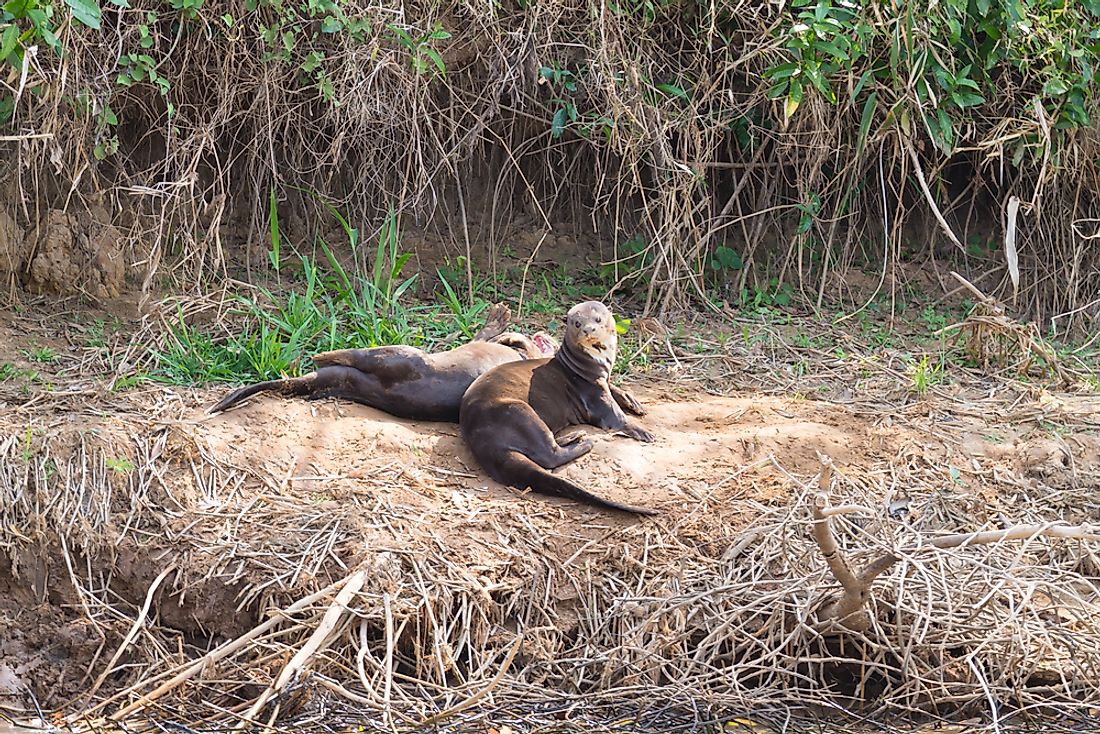Giant Otter Facts - Animals of South America

The giant otter is a member of the Mustelidae family. It is a social animal that lives in a group of up to eight members, with the group centered on a dominant breeding pair. The species are relatively peaceful and territorial but aggression has also been observed in some groups. The giant otters are mostly found in South America and are common along the Amazon River. Its velvety pelt has attracted poachers leading to a significant reduction in their numbers. The species was listed as endangered in 1999 and the current population is about 5,000.
Physical Characteristics
The giant otter is the longest species in the mustelid family. The male giant otter is between 4.9 and 5.6 feet long from head to tail and weighs 57-71 pounds while the female is between 3.3 and 4.9 feet and weighs 49-57 pounds. The tail is well-muscled and can be as long as 28 inches. The giant otter possesses short fur compared to other otter species. The fur is chocolate brown and sometimes reddish or fawn and appears black when wet. The fur is so dense that water cannot penetrate the skin. The guard air traps water and keeps the inner fur dry. The throat and under the chin has white marking which is used to identify one another. The giant otter has small and rounded ears while the nose is completely covered with fur. It has highly sensitive whiskers.
Diet
Giant otters are apex predators and feed mainly on fish such as Characins and catfish. They hunt on shallow water of about 2 feet. They are opportunistic; feeding on whatever is locally abundant. If fish is not available, they will prey on crabs and even small anacondas. The giant otter hunts solo or in groups and relies on the sharp eyesight to locate its prey. They catch their prey and consume it immediately and eat up to 10% of their weight.
Habitat and Range
The giant otter is commonly found in freshwater rivers which floods seasonally. It may also inhabit freshwater springs and permanent lakes. They make their dens on the banks of the river and also use the river banks as latrines. Food abundance and low sloping banks are important factors when selecting a habitat. They range across South America along the Amazon River and Pantanal.
Behavior
Giant otters are social species. They live in groups of 4-8 animals with the group centered on dominant male and female species. They are diurnal species with most of their activities taking place at night. They often engage in a behavior known as “periscoping” whereby they show their throats and chests which are marked white to each other, especially when they are with other otters. When hunting larger species such as small anaconda, they usually hunt in cooperation and eat the prey together. Giant otters are noisy species. It produces an explosive snort when it senses danger and hums when reassuring within the group
Reproduction
The giant otter makes its den on the river bank and gives birth within the dens. They normally give birth during the dry season. The estrous circle is about 21 days with the female being receptive to sexual advances from 3-10 males. The male initiates the copulation. The gestation period of the female giant otter is 65-70 days and gives birth to 1-5 pups







